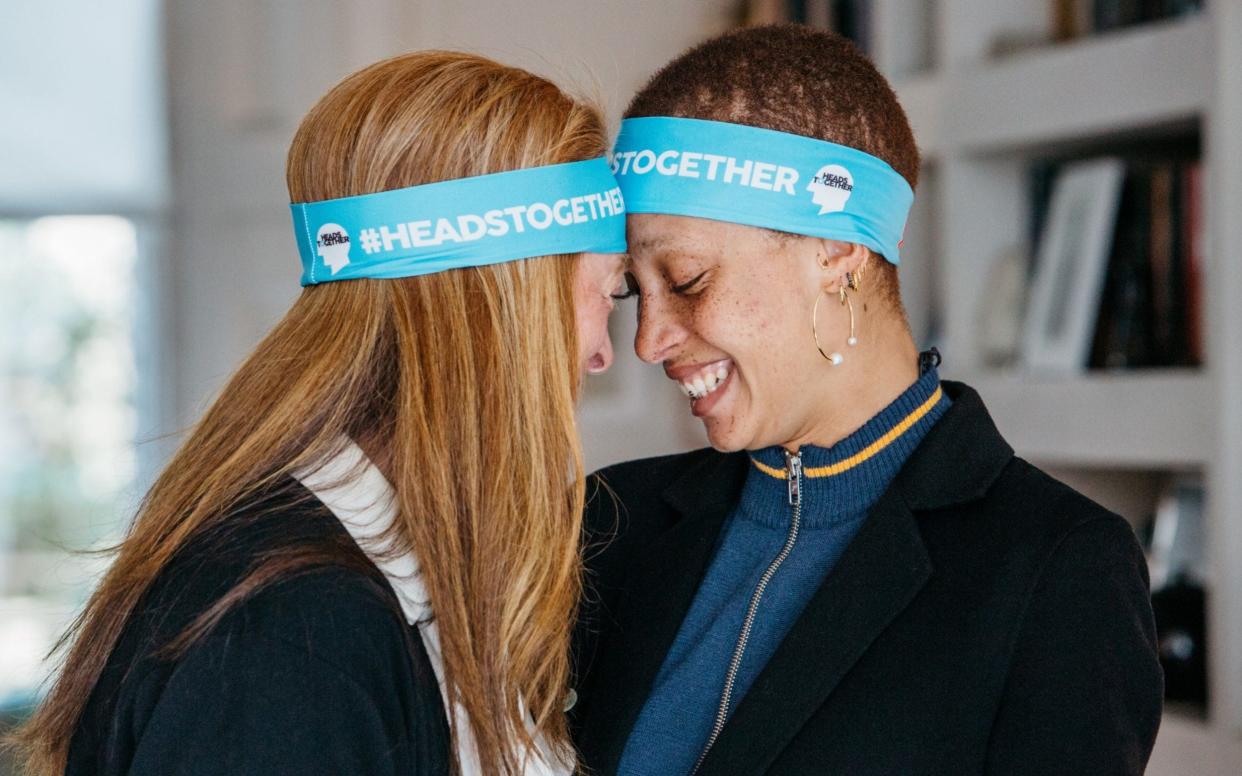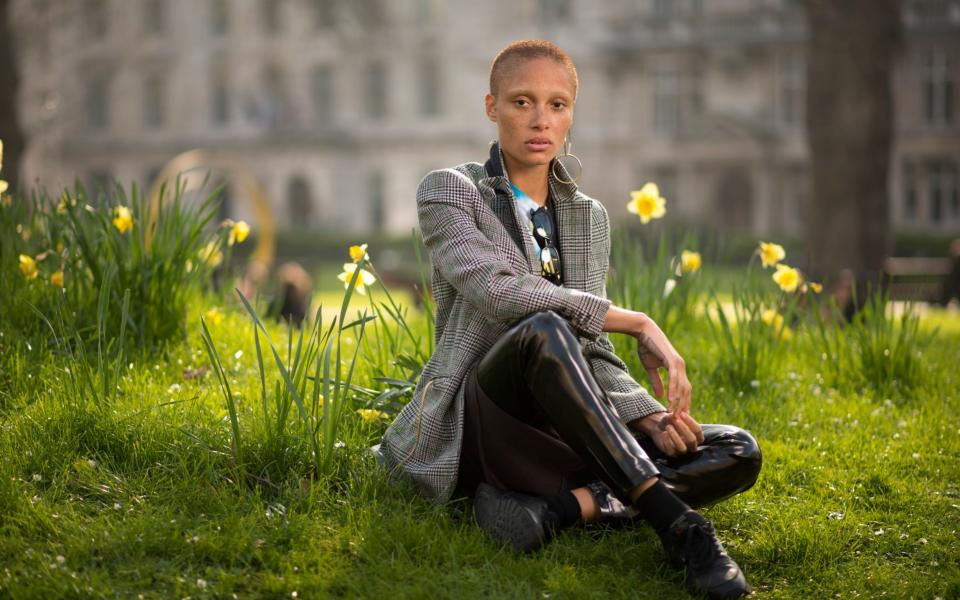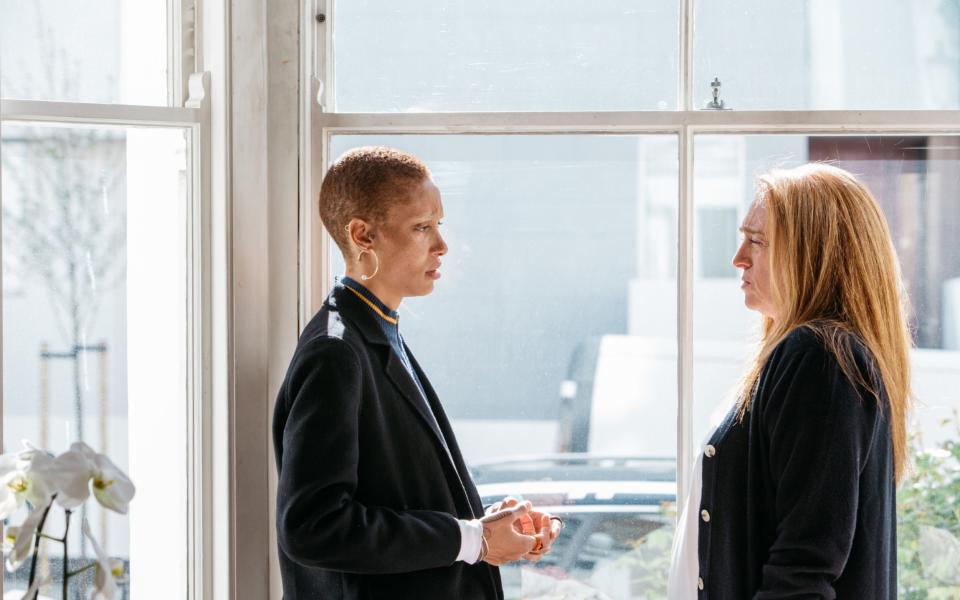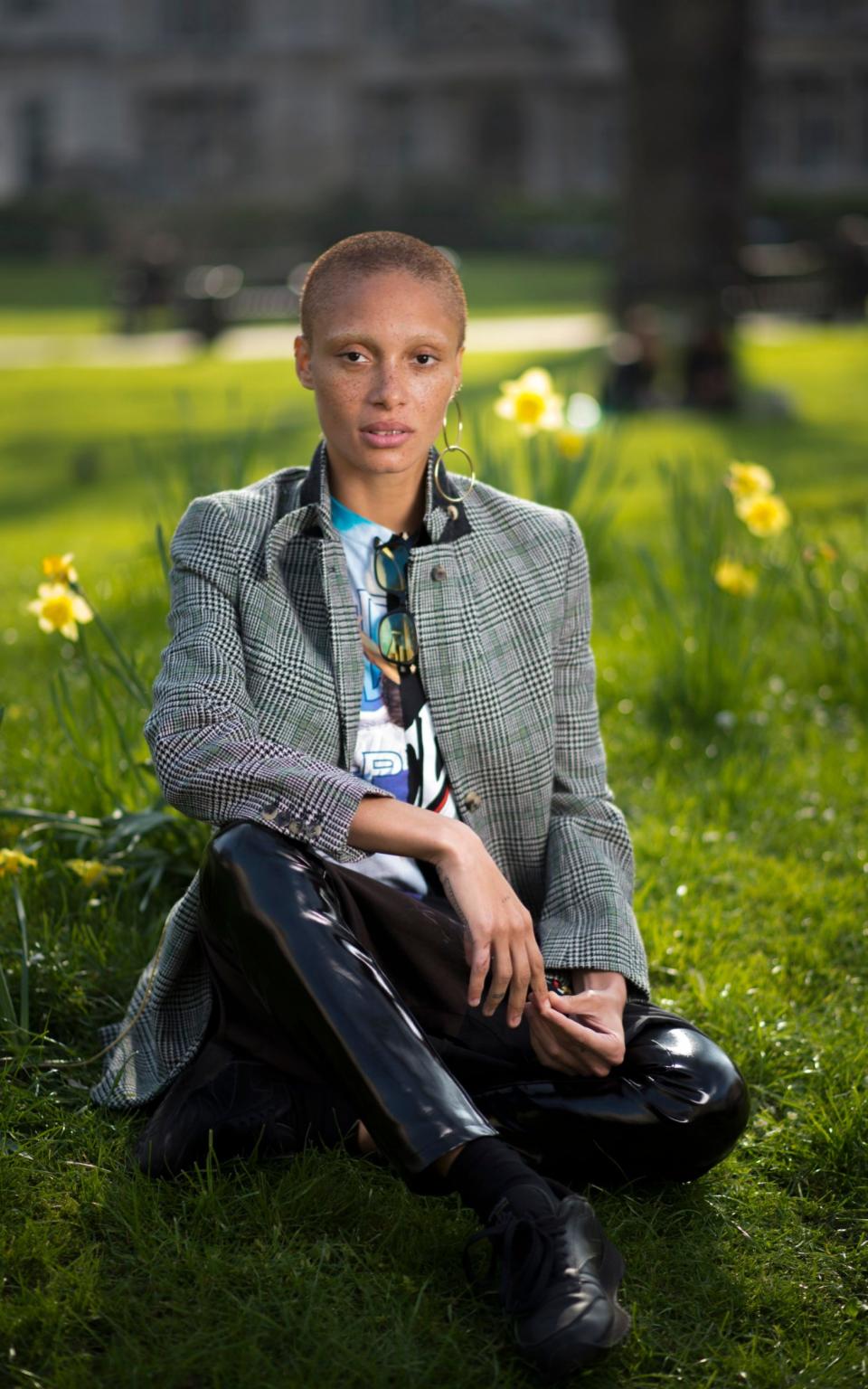'I had everything, but I felt nothing' - model Adwoa Aboah on the day she decided to take her own life

You would imagine Adwoa Aboah has led a charmed life. The British model is in peak demand, having just finished a stellar catwalk season (undoubtedly her most high profile yet) which saw her walk for Marc Jacobs and Coach in New York; Topshop and Erdem in London; Versace and Fendi in Milan and Dior and Chanel in Paris.
Her face graces the cover of this month’s American Vogue alongside Gigi Hadid, Kendall Jenner and a kaleidoscope of other models meant to represent “multiplicity” (fashion’s new take on diversity).
And when she’s not travelling the world for work, she splits her time between the plush Westbourne Park home of her parents (Camilla Lowther, an elite fashion photography agent, and Charles Aboah, who owns a location scouting company for fashion editorials and campaigns) and her new apartment in Brooklyn. Oh, and her best friend is Cara Delevingne.

But the modern It girl label is not one Adwoa would ever choose to wear, herself. Five foot eight with striking freckles, flawless caramel skin and closely cropped red hair, she is as arrestingly beautiful in the flesh as you might expect; yet her edgily cool look - black leather trousers, black trainers, military-style jacket, two huge gold hoops dangling from one ear lobe - belies an obvious shyness at heart. She seems a far older soul than her 24 years.
That’s perhaps unsurprising, when you learn that, only two years ago, Adwoa was so numbed by depression and wrapped up in drink and drug addictions that she attempted to take her own life. A happy consequence of both her recovery and the sudden propulsion of her modelling career is that it has provided her with a platform to talk about mental illness, in the hope that she might be able to inspire others to get help before they reach the point she did.
Having already set up Gurls Talk, a movement which aims to get young women across the country to open up in a safe space online, today she can be seen talking frankly with her mother about the darkest period of her life in a short film they made for Heads Together, the charity campaign set up by the Duke and Duchess of Cambridge and Prince Harry to help change the national conversation about mental health.

Astonishingly, this was the first time mother and daughter had spoken in depth about what was an emotionally devastating period, for both of them. The conversation is hugely revealing, with Camilla admitting that the family was “in denial” about Adwoa’s depression, which first developed when she left home for boarding school, outside London.
“Boarding school was a really pivotal moment,” Adwoa tells me, today. “Before I went there I was so happy. I’m not sure I was ready for it. I was only 13. My parents didn’t send me away, it was my choice as well. But I definitely shouldn’t have stayed for five years.”
Painfully shy, she found it hard to make friends, but didn’t want anyone to see how lonely she was, either.
“I made a decision that I was just going to stop talking about anything to do with emotions or what I was actually going through,” she says. “I started experimenting with drugs. I kept it a secret for ages.”
Juvenile experimentation escalated into an addiction to ketamine, a powerful horse tranquiliser which can causes hallucinations and out-of-body experiences. And while her career took off - she signed to modelling agency, Storm at 18, while studying drama at Brunel University - her personal life began to come apart at the seams.

“To everyone else in the outside world I was doing really well, but inside I was just slowly crumbling. I stopped hanging out with really good friends because they would be the ones to ask me how I was. I’d broken up with the boyfriend I’d had since I was 18.
“No one knew how bad it was. My go-to protective thing is isolation. It’s turn off the phone, don’t speak to anyone, lie in bed all day and then maybe go out at night and do the same thing over again. That’s how I got through the day, that’s how I got through the week.”
By the time she was 21, her worried parents were realising the extent of her drug problem and staged an intervention, sending her away to a Adwoa with her mum Camilla.
“I knew I’d been self-medicating [with drugs] ]because I was depressed,” she says. “I wasn’t going to Arizona to stop drinking or taking drugs, I was just going to sort out why I’d been so sad, but they both went hand in hand.”

Completely exhausted by life, she says: “I remember thinking I couldn’t be bothered to feel any emotions anymore. I will never feel as bad as I did that time... you could be in the most amazing place in the world and everything is grey, everything is bleak and numb.
“I needed somebody to tell me it was fine to feel the way I did, and someone to relate to. If I’d had that, I would not have felt as alone as I did for that long.”
After returning to London, she relapsed and spiralled into a deeper depression, which resulted in her attempting to take her own life with an overdose at a rehab centre in October 2015. She spent four days in a coma, while her parents and younger sister, Kesewa kept a bedside vigil.
It is clear from the Heads Together film, shot in the family’s West London home, that they have only recently been able to process how close they came to losing their eldest daughter forever. “I thought you had a problem with drugs,” Camilla tells Adwoa on camera. “I didn’t really think it was anything else until you tried to kill yourself.”
The filming process has been incredibly cathartic for both of them. “I’ve never been ready to have that conversation with her,” Adwoa tells me. “We have an amazing relationship but we tend to brush past certain things and have done for a long time.”
Now, however, she understands she wasn’t the only one in pain: “It was me who was going through it, but I wasn’t the one who was going to be left. Getting that call, sitting by my bed, not knowing if everything would be ok. I wasn’t even awake for that part.”
Though her treatment for depression, bipolar disorder and addiction has been successful, the filming also alerted her to her mother's residual anxiety.
“She brought up things like how if I don’t answer the phone - and quite often I don’t - their immediate thought is that I’ve done something.
“For me, I find that really annoying, because I’m not fragile, I need them to trust me more. But hearing it from her side, I understand. I can see why they worry.”
On the flowery sofa in Adwoa’s living room, there is a cushion with the words: “It is the friends you call at 4am that really matter” stitched into it. It’s just a cushion cover, but it also happens to tell you rather a lot about its owner.
She has learnt earlier than most the value of surrounding yourself with people who care about you, and doing work which you love. Happily single and about to embark on living alone for the first time, she seems - perhaps also for the first time - to have found a sense of calm and balance.
“One day at a time,” she says, smiling broadly to reveal a tiny diamond twinkling in her front tooth. “I live by that.”

